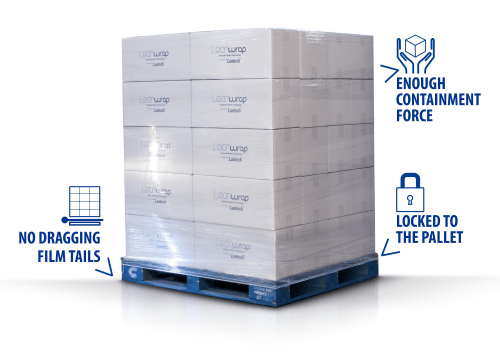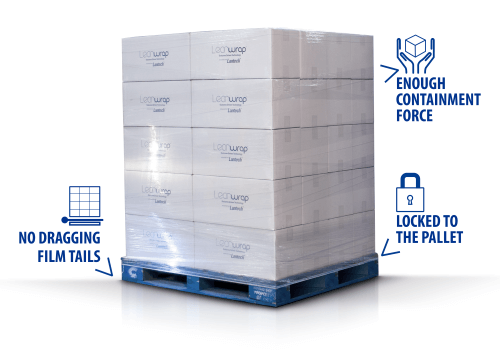Since a main reason for stretch wrapping is preventing product damage during transit, it may come as a surprise that the leading cause of product damage is…in-effective stretch wrapping. Just buying or having a good stretch wrapper doesn’t ensure a safe load. But how you use your stretch wrapper can.
 2 Steps to Reduce Risk of Damage
2 Steps to Reduce Risk of Damage
No matter which stretch wrapper you have or how your shipping operation is set up, you can lower the risk of in-transit damage by following these two steps:
- Setting standards for your wrapping.
- Always wrapping to those standards.
The 3 Key Standards to Set
Simply saying, “set standards” isn’t enough if you don’t know what standards are important. In general, no matter your specific operation, there are 3 standards every stretch wrapping operation should have in place.
The three key standards are: applying proper containment force everywhere on the load, locking the load to the pallet with a film cable, and eliminating long or dragging film tails.
Those last two are the same for everyone, but you have to figure out the right containment force for your loads. Actual experience – what’s working – is the best indicator. But if you don’t know what your containment force should be or don’t have data, there are guidelines that will help you. Learn more about how much containment force different loads need.
You can learn more about the specifics of setting each of the three standards here.
Wrapping to Your Standards
Once you have your standards and apply them to every load, then in-effective stretch wrapping is no longer an issue. Neither is the leading cause of in-transit damage. That’s good news, but it gets even better.
Wrapping to your standards also reduces the risks from other causes of damage. It can make up for poorly stacked loads where items are not lined up straight. Or loads that don’t fit the pallet. And even help to compensate for reductions in primary packaging materials (think bottled water).
In-transit product damage costs billions of dollars every year. Some damage you hear about, like when a truckload is refused. But some damage may not get reported, like when a load has to be restacked, or when products show up at stores in poor condition and don’t sell or get discounted. This damage still has a cost and it needlessly wastes precious resources.
Better stretch wrapping can help overcome product damage, reducing both costs and harm to the environment. You can learn more about reducing the risk of damage by fixing common wrap problems in our free webinar, How to Fix Common Wrap Problems. Watch the whole presentation here.
You may be interested in these related posts:
- Damaged Products Hurt Your Company’s Bottom Line
- How Stretch Wrapping Reduces Risk of Damaged Pallet Goods
- The Product and Pallet Damage You Can’t See
This post was published on January 24, 2017 and updated on February 13, 2019.
January 24, 2017

